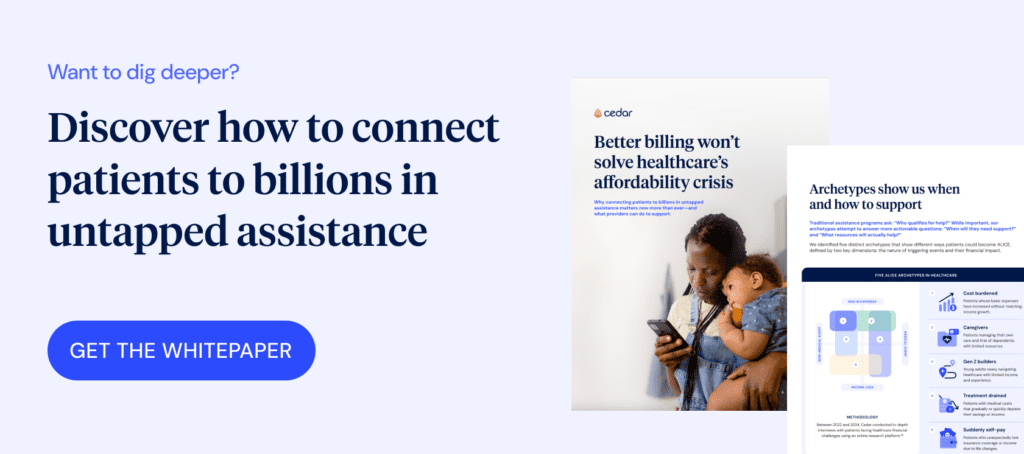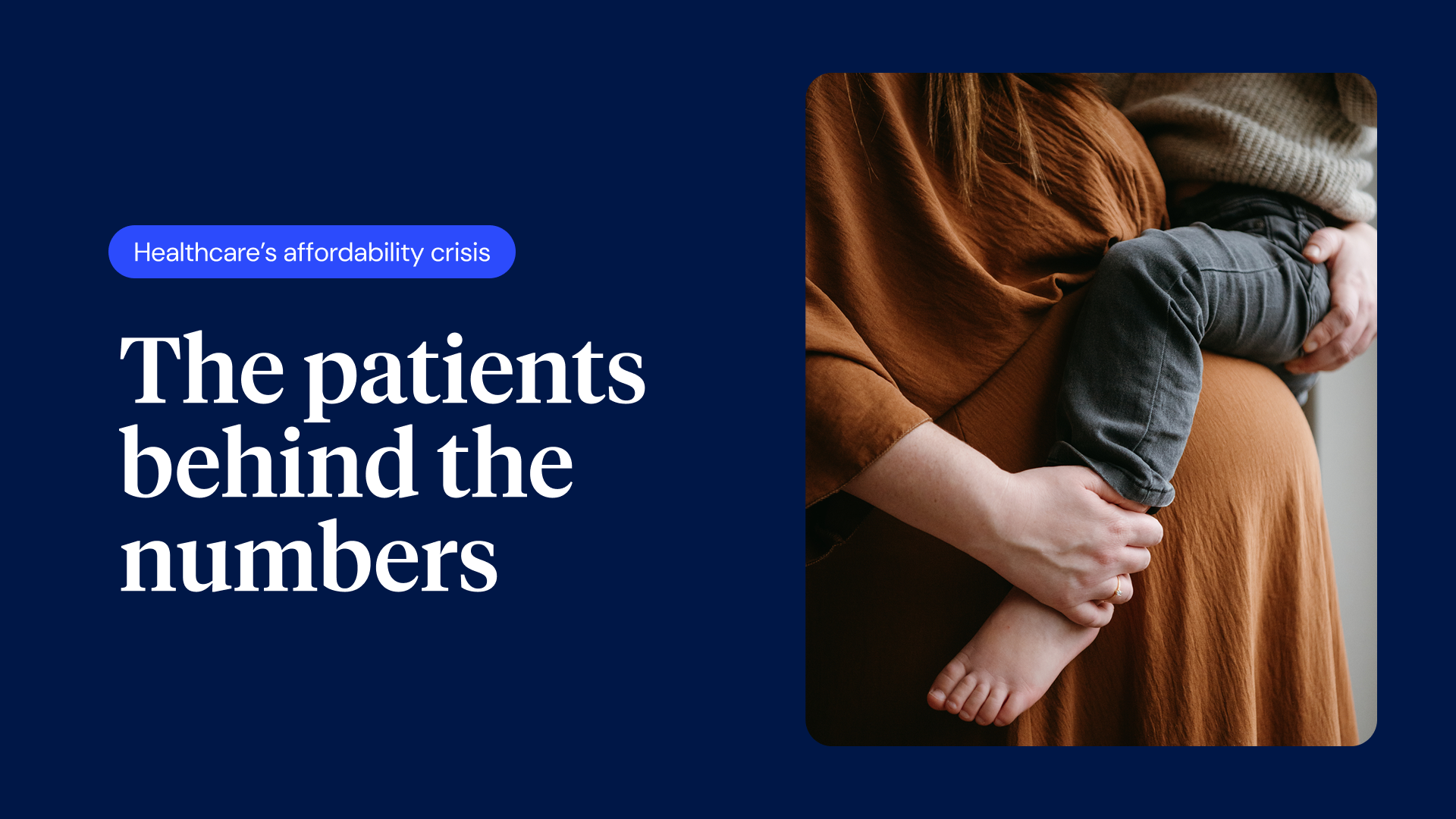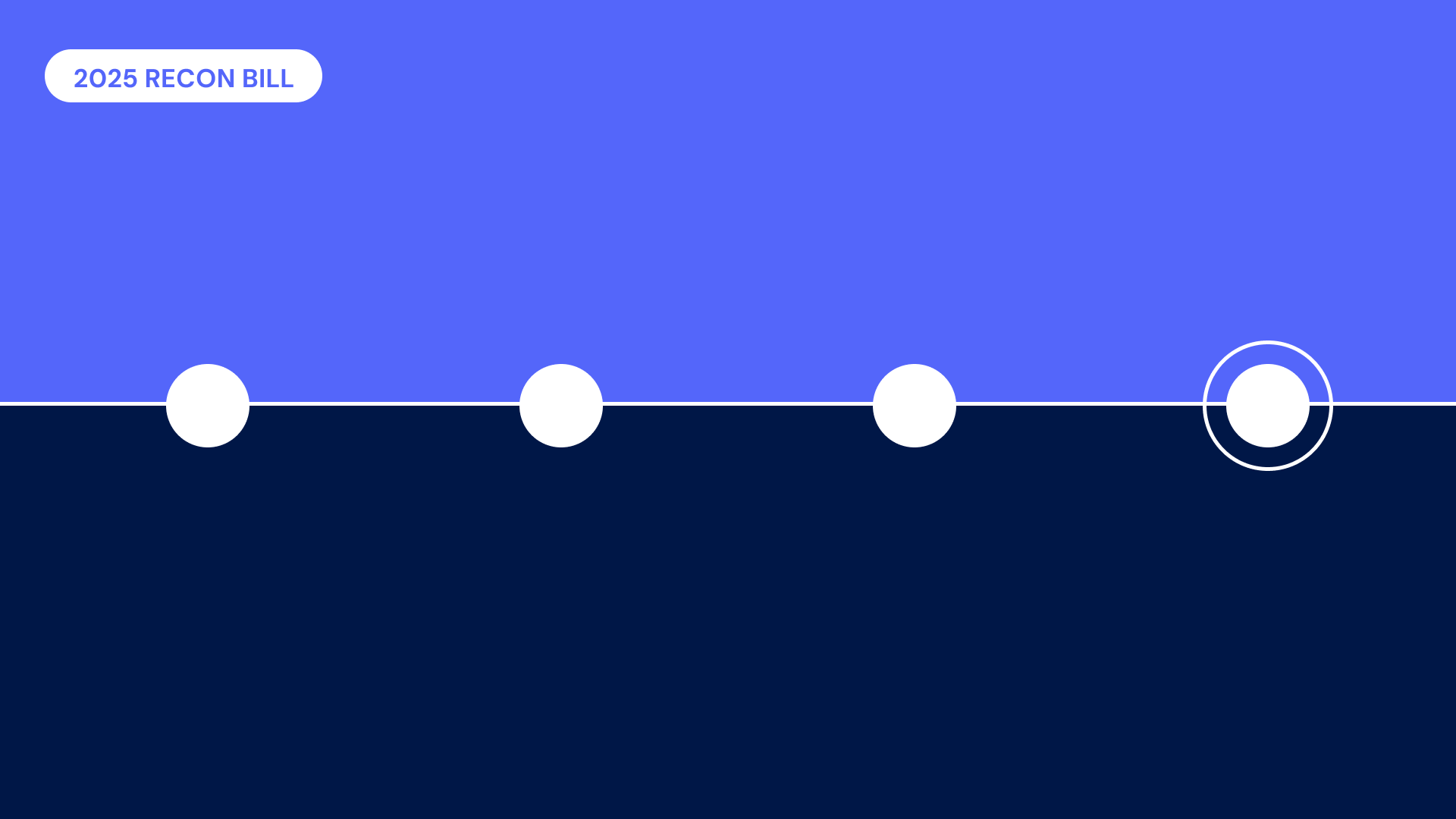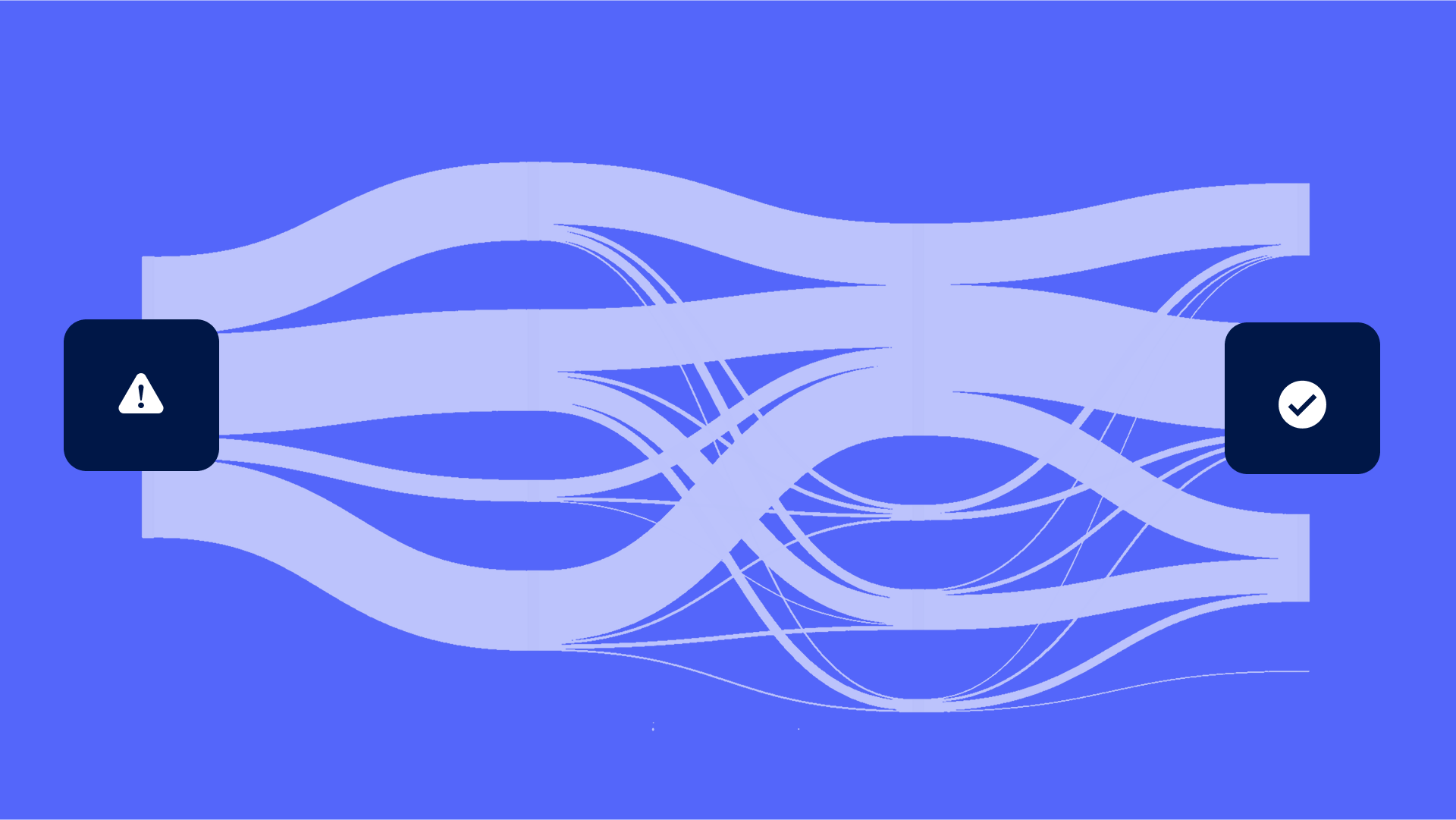In spring 2022, I gave birth to my first child. For the first time in my professional life, I was taking months off work, and I was excited to give myself space to disconnect and figure out what this “Mom” thing was all about.
Three years before my daughter was born, I had joined Cedar as a Product Designer because I was excited to help make healthcare more human. I spent my days becoming an expert in the billing process and all the ways it can go wrong. Ironically, this didn’t save me from struggling to understand my own healthcare bills while I was on parental leave, placing sleep-deprived calls to my insurance and doctors while my daughter napped on me. It was a painful reminder that even as a healthy person with a full-time job, insurance and insider knowledge—healthcare bills are still the worst.
When I returned to work in the summer, I had a renewed appreciation for coffee in the mornings, conversations with adults and most of all, why I come to work everyday. I wanted to tackle the biggest opportunities to help others. As we often do, our team turned to the data first, and patients with big bills stood out to us as needing extra help to resolve their bills. We learned that these patients tend to be younger, live in lower-income zip codes and intriguingly, are highly engaged with our billing platform even though they had a tougher time paying.
Next, we wanted to learn more about the people—and the stories—behind these big bills. To do so, we worked with our healthcare provider partners to connect with patients who had these big bills. We also considered other aspects of their billing situation (such as income, insurance status, number of visits, age and gender) to make sure we were talking to a diverse, yet representative, group.
What we heard from patients
I’ve talked to many patients over the years about their frustrations, but these stories hit me especially hard. As Jaya Birch-Desai, our director of research, led the conversations with grace and empathy, I often fought back tears (and sometimes didn’t succeed).
One story stood out—another new mother who, unlike me, had a complicated pregnancy with many surprise bills. She and her partner both worked, and even took on extra hours, but she often had to miss work (and those hours of pay) for her doctor’s visits. While my phone calls ended up settling my bills, her calls and applications for financial assistance went nowhere. Finally, she ended up filing her bankruptcy “to keep the lights on and the baby in diapers.”
Our new mission was clear—to make sure that these patients, who were so motivated to pay but didn’t always have the ability, didn’t fall through the cracks. Here’s what we learned from them on how.
1. “They don’t ask you about daycare”
When we started, we asked ourselves, “where do medical bills fall on people’s priority lists?” We learned that healthcare bills were just one of many expenses people had to deal with, and came second when patients were struggling to cover basic life needs.

Patients spend a great deal of time trying to stay ahead of their finances, sometimes planning out months in advance. Many said “Excel is their friend,” and they are aware of where every dollar goes. However, even with planning, healthcare bills can be unexpected and not covered by savings.
Financial assistance programs should help, but to qualify it only takes into account traditional measures of wealth like income. Other major expenses are not asked about, so providers have a limited understanding of what people can actually afford.
“They look and see ‘well this is how much this person makes a year’ but they don’t ask you about daycare […] because a parent of two children who has to pay $920 a month in daycare just so I can go to work […] that is a lot of money.”
Our opportunity: Understand the complete picture
We need to learn more about patients’ entire financial situation in order to understand what’s realistic for them to pay towards healthcare bills. Patients want to share more, so it’s on us to start the conversation so that we can guide them towards the best options.
2. “Had I known”
Even when patients do prioritize their healthcare bills, they often have trouble getting started because they are unaware of, or not informed about, available financial assistance and flexible payment options. As a result, patients are delaying payment, and even worse, delaying the care they need. Their fear of big bills lowers their chances of getting better, sooner.
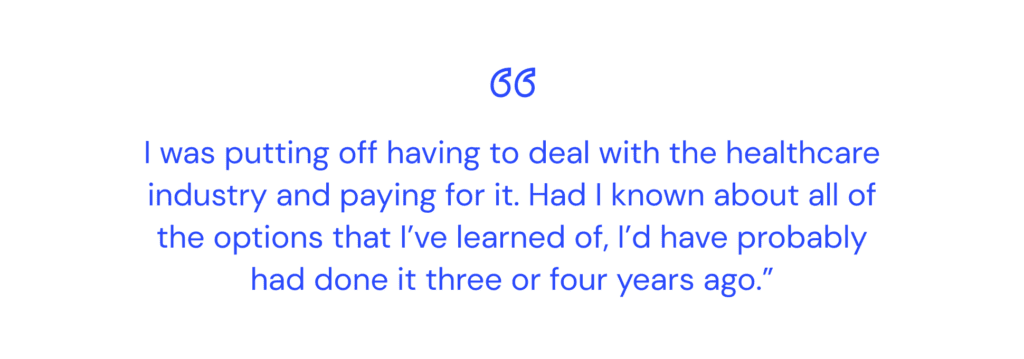
Healthcare providers often have flexible payment options in place, like discounts or interest-free payment plans, but the burden is often on patients to educate themselves. One patient “literally cried” when she first heard how much she owed, and only after she called in did she learn about payment plans.
“What?! Are you kidding me? It was like the best day ever.”
Our opportunity: Increase awareness
Patients who were able to learn about their options early had a much better chance of paying their bills. One in four of the patients we interviewed were able to speak to a financial counselor after their initial visit, and were able to set up a payment plan proactively that fit their budget. By making patients aware of their options earlier and helping them plan, we can set them up for success later on.
3. “It’s just never-ending bills”
Patients with big bills tend to have more complex health issues, whether it’s a giant ER bill, a barrage of bills from their many visits or both. The situation is often made worse because of the way large health systems are organized—they often have different business groups that bill separately, and external organizations they partner with for specialized services like anesthesiology. Patients might receive a large anesthesiology bill from a provider they’ve never heard of, and assume they’ve been billed incorrectly.
As a result, patients get overwhelmed. They already have sticker shock from the first bill, and it just piles on as the bills continue to roll in. Patients often freeze up as they wait for all the bills to come in first, and they aren’t sure if they should just “pay a little on each one” or just not pay at all.
On top of all of this, they are still trying to recover from their health issues. One patient described the experience to us while recovering in her bed, a tube in her nose helping her breathe,
“Every person has a bill.
Ambulance ride is a bill.
Whatever they do in the ambulance is a bill.
What they do at the ER is a bill.
ER doctor is a bill.
The blood draw from the ER is a bill.
Then when you get to the room, and the doctor sees you, that’s a bill.
And then when they draw blood, that’s another bill.
They do an X-ray, well that’s a bill.
Then the guy has to read an X-ray, that’s a bill.
Everything’s a bill.
I mean, it’s just…never-ending bills.”
Our opportunity: Solve for the person, not the bills
When we asked how it could be better, patients suggested something that sounds simple but is hard to do—combine their bills together in one place to manage. By doing this, we make it easier for patients to make good decisions about which bills plan for and prioritize. We also think there’s a deeper theme here, which is to remember that individual invoices all roll up to an individual human, and to keep that in mind when designing the experience.
4. “Work with people”
Even when patients come up with a plan for paying their bill, they may not be able to stick to it. Patients may be living paycheck to paycheck, or not working because they are too sick. They may also have other surprise expenses that take priority, like needing a new heating system. While payment plans, with a set amount owed each month, work for some patients, they are not always flexible enough to adapt to month-to-month changes in their income and expenses.
As a result, patients are not able to pay some months, while other months they may have more money than expected and pay a little extra. They may also create workarounds, like changing the dates payments are made to wait for more money coming in. In the worst case, they will quit their plan and stop paying altogether.
Our opportunity: Value relationships over transactions
For patients with large bills, many will need to pay it off over time. While “set it and forget it” may be great for those with a stable income, we also need to provide flexible options that adapt to those with fewer means and changing needs. As one patient reminded us—working with people leads to win-wins for both sides:
“Work with people, because I think they would make more money. And [let] people propose the options, because people may even offer more than you would offer.”
5. “I’m doing everything I can”
Patients scrimp, save, pick up extra jobs and ruthlessly budget in order to make ends meet. They think about their finances all the time, and look for creative solutions to pay their bills. We saw in our data that patients are highly engaged with our product and motivated to pay, but we didn’t know why. It turns out, patients feel a social responsibility to pay due to their respect for the providers who care for them:

When patients have limited means but high motivation, they do things like make small partial payments, “a few dollars here or there” to make progress on their bills and send a signal to the provider that they are trying. However, depending on the provider’s policy, these payments don’t prevent them from being “in the red” and eventually, being sent to collections. Patients feel like their efforts are not seen, and eventually lose their motivation.
“I’m doing everything that I can and what I can do – not being met with the same effort. Why should I give them a single dime?”
Our opportunity: Recognize effort and motivation
Patients just want some respect in return, and for their efforts to be recognized. By reaching out to these patients who are motivated and rewarding their efforts with things like more options, more time to pay, discounts, or simply making sure they stay in good standing—we can help these patients from being sent to collections when they are still working hard to pay.
Working together to raise the bar
We brought these findings to our healthcare provider partners to see if they were observing similar patterns, and the answer was an overwhelming “yes.” Providers invest a great deal into programs and staff to support patients with big bills, but it’s challenging to reach everybody—they were excited by using technology to scale their efforts while still keeping a “human touch.”
There’s a concept in design called the “curb-cut effect,” inspired by the ramps from the sidewalk and street that you see at every intersection. When we work together to solve problems for those in the most need (such as people in wheelchairs), we create an easier experience for others as well (such as moms pushing their strollers). My hope is that helping people pay off their big bills will lead to a more flexible, empathetic, and human experience for everyone.
In 2025, we’re excited to partner with providers to better serve their patients, and take action on these opportunities we’ve found. We’re already making care more affordable by connecting patients to Medicaid and flexible payment options—and we’re expanding our focus to include resources like medication assistance and ACA marketplace plans.
This year, our goal is to help our provider partners look their patients in the eye, and say:
“We are here to understand your situation, so we can help you be aware of your options. We see you as a person whose relationship we value, and not just a series of numbers and payments. We recognize your effort and motivation, and reward you for it. Most of all, we heard you, and we’re here to help.”
Originally published December 14, 2022, updated February 11, 2025
Diana Ye is Senior Director, Product Design at Cedar
